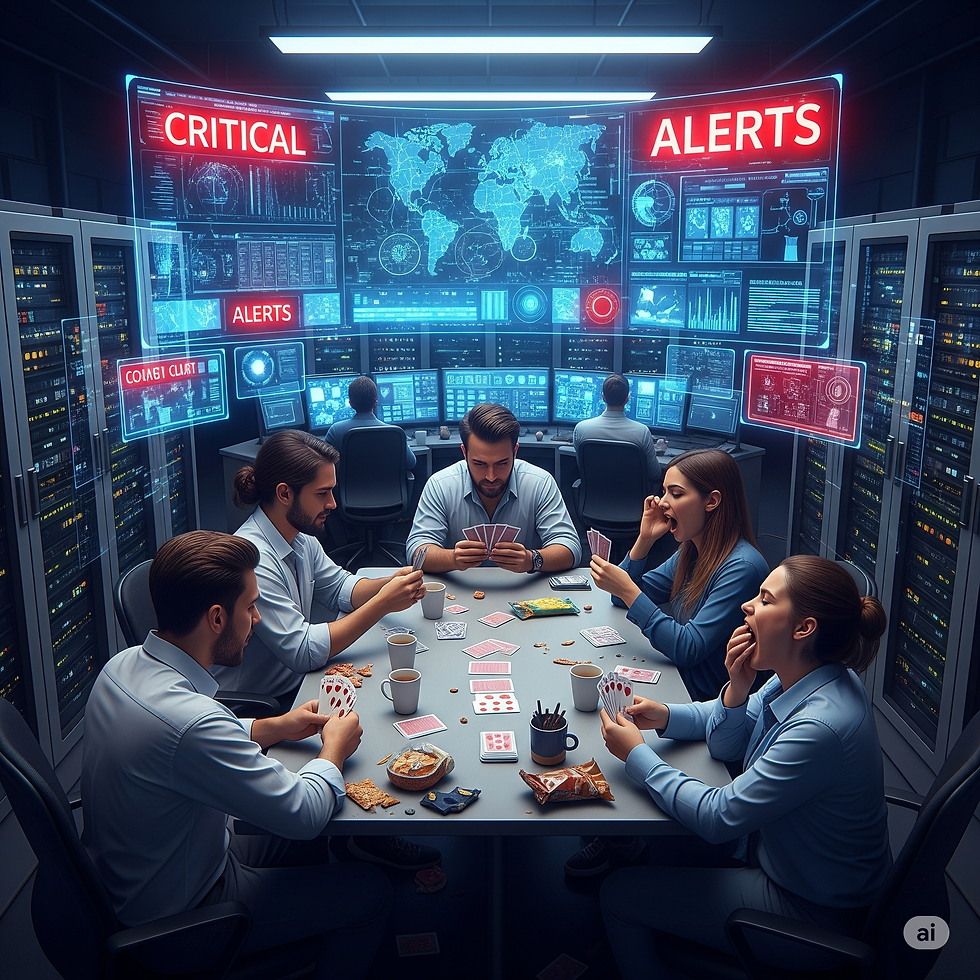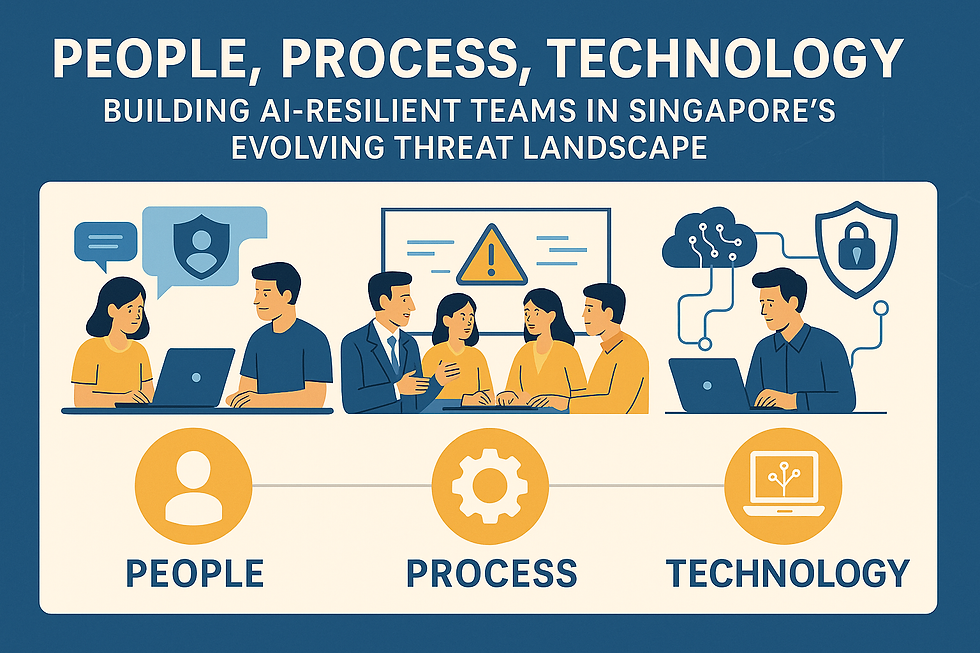AI and Cybersecurity: Navigating the Future, Today.
- MZT

- Jun 4
- 5 min read
Updated: Jun 5
As a cybersecurity consultant, I have watched artificial intelligence (AI) transform the digital landscape with a mix of awe and unease. In 2025, AI’s role in cybersecurity is no longer a futuristic promise it’s a high-stakes reality. From fortifying defenses to empowering cybercriminals, AI is reshaping the battlefield. Here’s my take on the latest trends, why they matter, and actionable tips to stay ahead in this relentless cat-and-mouse game.

The Trend: AI as Both Shield and Sword
AI’s integration into cybersecurity has reached a tipping point. On the defensive side, AI-driven tools are revolutionizing threat detection and response. Machine learning models now analyze vast datasets in real-time, spotting anomalies that would take human analysts days to uncover. For instance, AI-powered Security Information and Event Management (SIEM) systems can predict phishing campaigns by analyzing email patterns, reducing response times from hours to seconds. Companies like Darktrace and CrowdStrike leverage AI to create self-learning systems that adapt to evolving threats, making them indispensable for enterprises facing sophisticated attacks.
But here’s where my optimism falters:
AI is equally empowering adversaries. Cybercriminals are wielding generative AI to craft hyper-realistic phishing emails, deepfake videos, and even automated malware that mutates to evade detection. Recent reports indicate a surge in AI-generated social engineering attacks, with tools like those found on the dark web enabling even low-skill hackers to launch convincing campaigns. In 2025, the democratization of AI means the barrier to entry for cyberattacks is lower than ever script kiddies are now wielding tools once reserved for nation-state actors.

Recently I was using a new GPT that has no guardrails, and I was able to create a simple WannaCry Ransomeware with a kill-switch to boot, the GPT was able to give me advise on the best way to deploy it with social engineering, and this GPT is accessible to anyone. (I will not mention it here.)

What’s more, adversarial AI is emerging as a chilling trend. Attackers are training models to exploit vulnerabilities in defensive AI systems, creating a feedback loop of escalation. For example, AI can manipulate inputs to confuse machine learning classifiers, bypassing firewalls or intrusion detection systems. This is not theoretical research from 2024 showed that adversarial attacks could fool AI-based antivirus software 70% of the time. It’s a stark reminder that AI is not a silver bullet; it’s a tool that cuts both ways.
My Take: The Human Element Still Matters
Here’s where I stand: AI is a game-changer, but it’s not a cure-all. The hype around AI-driven cybersecurity often overshadows the enduring importance of human vigilance and robust processes. While AI can process data at lightning speed, it lacks the intuition to contextualize nuanced threats. For instance, an AI might flag a suspicious login from a new location, but only a human can discern whether it’s a legitimate employee traveling or a compromised account. Over reliance on AI risks creating blind spots especially when attackers are using the same technology to outsmart us.
Moreover, the accessibility of AI tools is a double-edged sword. It’s great that small businesses can now afford AI-enhanced security solutions, but the same accessibility fuels a flood of AI-powered attacks. My concern is that organizations, dazzled by AI’s capabilities, might skimp on foundational cybersecurity practices, assuming the tech will save them.
Spoiler: it won’t. Without a strong security culture, AI is just a shiny tool in a leaky ship.
Tips to Stay Ahead in the AI-Cybersecurity Arms Race
Here are my top recommendations for navigating this AI-driven landscape, blending cutting-edge tech with time-tested principles:
Embrace AI, but Don’t Worship It
Invest in AI-powered tools like next-gen firewalls or endpoint detection systems, but pair them with human oversight. Train your team to interpret AI alerts and challenge false positives. For example, if an AI flags an employee’s behavior as suspicious, verify it manually before locking accounts. Tools like Splunk’s AI-driven analytics can streamline this, but human judgment is non-negotiable.
Harden Against AI-Powered Attacks
Assume your adversaries are using AI. Protect against phishing by implementing multi-factor authentication (MFA) across all systems. Yes, even for that one legacy app you keep forgetting about. Use email filters with AI to detect subtle anomalies, like slight variations in domain names. And consider deepfake defenses: train employees to verify video or voice communications through secondary channels (e.g., a phone call to confirm a Zoom request) or a secret code word that changes everyday. I remember my army days, you say, "Pineapple" the reply code for the date is "Pear" and vice versa.
Upskill Your Team
AI is only as good as the people behind it. Invest in training programs to teach your team about AI-driven threats, like adversarial attacks or deepfake scams. Platforms like TryHackMe or Immersive Labs offer hands-on simulations that mimic real-world AI-powered attacks. Knowledge is power do not let your team be outsmarted by a bot.
Stress-Test Your AI Defenses
If you are using AI-based security tools, assume they are vulnerable to adversarial attacks. Work with ethical hackers/perform a VAPT(Vulnerability Assessment Penetration Testing) to test your systems for weaknesses, such as manipulated inputs that could trick your AI into missing threats. Regular red-teaming exercises can expose gaps before attackers do.
Build a Security-First Culture
No AI can replace a vigilant workforce. Foster a culture where employees report suspicious activity without fear of blame. Conduct regular tabletop exercises to simulate AI-driven attacks, like a deepfake CEO requesting a wire transfer. Reward proactive behavior to keep security top of mind.
Stay Informed on AI Trends
Sign up with us to stay informed and read up on the latest trend to stay ahead of the curve. He who knows, knows which fruit can be eaten.
Final Thoughts: Balance is Key
AI is rewriting the rules of cybersecurity, and i am both excited and wary about where it is taking us. It is empowering defenders with unprecedented speed and scale, but it is also arming attackers with tools that make traditional defenses obsolete.
My opinion? The winners in this arms race will be those who pair AI’s power with human ingenuity and disciplined fundamentals. Do not let the allure of AI distract you from the basics: patch your systems, train your people, and question everything. In 2025, cybersecurity is not just about technology it is about staying one step ahead in a world where the machines are learning faster than we are.
As initiatives like CSA’s Cyber Essentials emphasize responsible AI use, certifications such as IMDA’s Data Protection Trustmark gain increasing significance in ensuring trustworthy and secure AI-driven cybersecurity practices.



Comments